We are back from Joshua Tree in time to Celebrate our Planet and her Amazing Diversity of Life: Plant, Animal and Geological. I will be hosting an Earthday Show & Tell. Kids can bring or share special  memories of their planet, or how they have made it better. Here are a few ways my family and our involved friends have made a difference by protecting as well as enjoying Earth.
memories of their planet, or how they have made it better. Here are a few ways my family and our involved friends have made a difference by protecting as well as enjoying Earth. 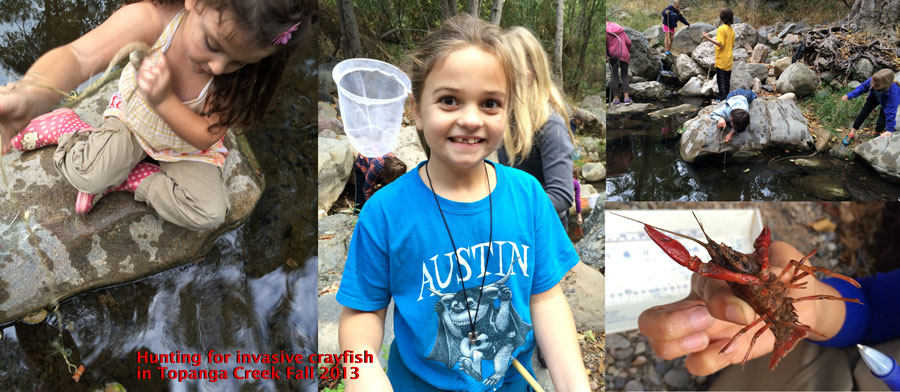
One way we can is by planting seeds, growing our own food, and experiencing the cycle of plantlife. 
The craft for Earthday is PLANTING.
We will need: Seeds and Seedlings you wish to share. And a stack of Newspapers so I can show everyone how to make biodegradable potters to bring your plants home and put in your indoor or outdoor gardens. If anyone has Milkweed plants which is the only food for Monarchs, bring those to share too.
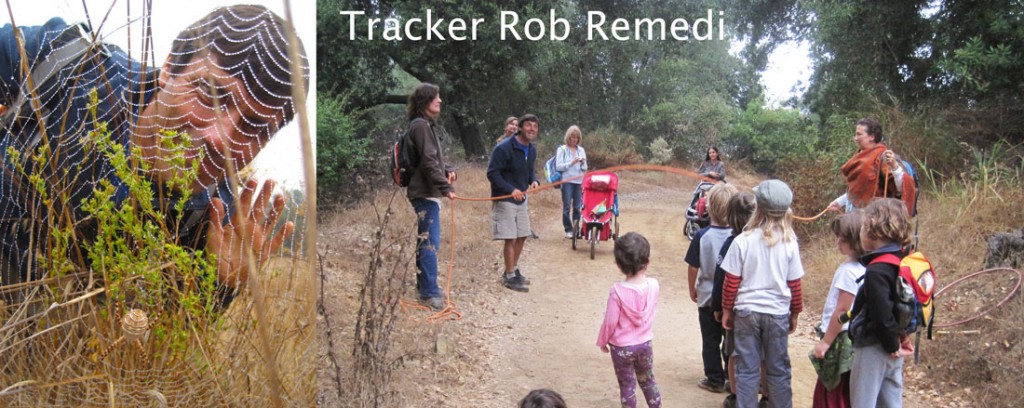 My family has taken many conservation “walk-abouts” with Tracker Rob.
My family has taken many conservation “walk-abouts” with Tracker Rob.  In conjunction with the Tree people, we have taken out invasive plants and planted indigenous species. As members of the Topanga Wildlife Youth Group, my children participated in a sacred red-tailed hawk release as well as helped biologists record, research and remove invasive crayfish from the Topangacreek. For several years, I volunteered by going out around midnight to count the elusive grunion fish that come ashore to mate during sprint and summertime full moons.
In conjunction with the Tree people, we have taken out invasive plants and planted indigenous species. As members of the Topanga Wildlife Youth Group, my children participated in a sacred red-tailed hawk release as well as helped biologists record, research and remove invasive crayfish from the Topangacreek. For several years, I volunteered by going out around midnight to count the elusive grunion fish that come ashore to mate during sprint and summertime full moons.  Find out a way that you can get involved to help protect your environments and the your personal web-of-life. Your family will have a sense of pride and an added connection to the world outdoors. This is one of the best ways to prevent cynicism and complacency from taking hold of a human being.
Find out a way that you can get involved to help protect your environments and the your personal web-of-life. Your family will have a sense of pride and an added connection to the world outdoors. This is one of the best ways to prevent cynicism and complacency from taking hold of a human being.
]]>
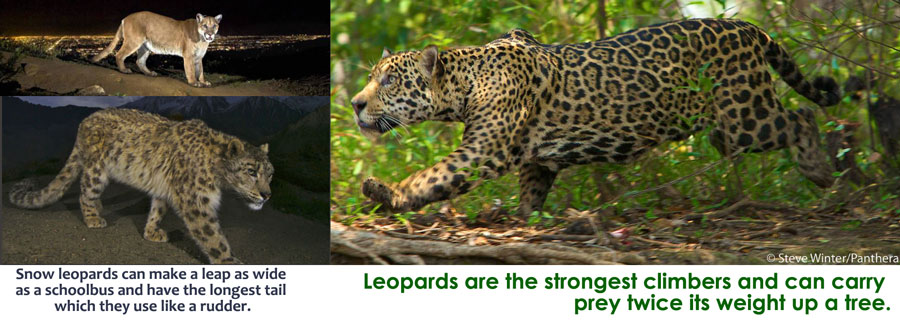 Jaguars, Mountain Lion, Snow Leopard, Leopard, & Cheetah. Visit online, Discover Kids on Big Cats to be amazed and inspired for our crafts. With the craft supplies I provide, you can make a Tiger, Snow Leopard, Cougar or Jaguar out of paper that can run.
Jaguars, Mountain Lion, Snow Leopard, Leopard, & Cheetah. Visit online, Discover Kids on Big Cats to be amazed and inspired for our crafts. With the craft supplies I provide, you can make a Tiger, Snow Leopard, Cougar or Jaguar out of paper that can run.  And if you bring an all white or solid-colored T-shirt, you can stencil a Big Cat of your choice and
And if you bring an all white or solid-colored T-shirt, you can stencil a Big Cat of your choice and  add the words, “Save the Big Cats!” Feel free to check out the Lesson Plan by National Geographic for ages 8-11 that I will be utilizing for our blanket learning time.
add the words, “Save the Big Cats!” Feel free to check out the Lesson Plan by National Geographic for ages 8-11 that I will be utilizing for our blanket learning time.
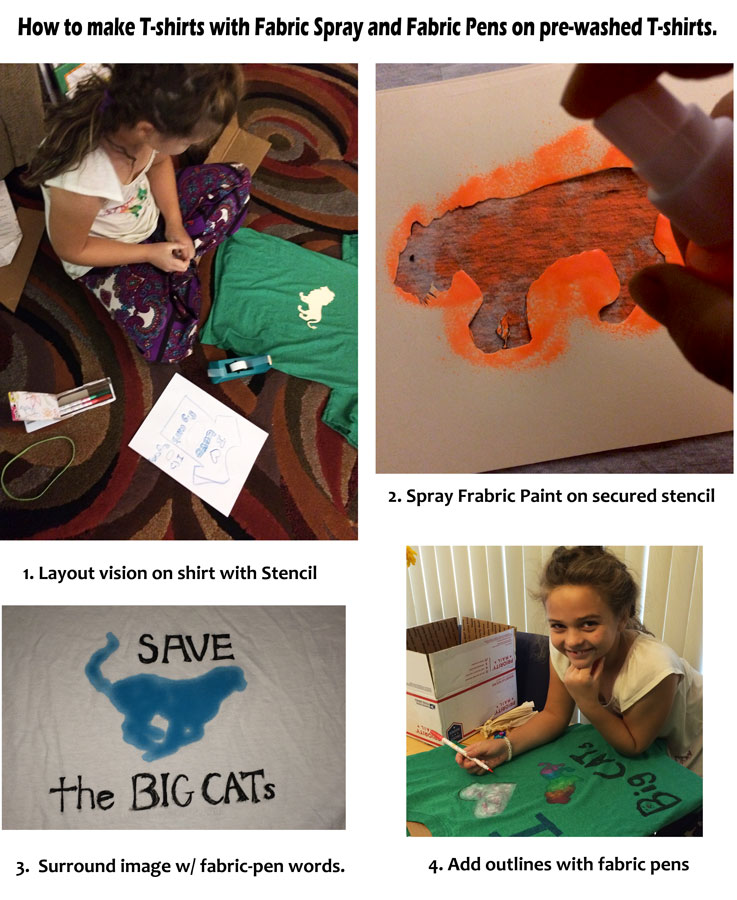


 Last week at the Broad Stage, some of us had the opportunity to learn from Steve Winter, a 20 year veteran of National Geographic, about Big Cats, their habitats and how to help protect them. With his videos and photos, he enthralled us with stories of how he photographed and wrote the first Jaguar story to make it in National Geographic; his coldest adventures capturing the image of Snow leopards in the Himalayas; evading charging Rhinoceroses while shooting tigers, and his most recent photo stake-out to collect images of LA’s Puma, P-22 whilst roaming near the Hollywood sign in Griffith park.
Last week at the Broad Stage, some of us had the opportunity to learn from Steve Winter, a 20 year veteran of National Geographic, about Big Cats, their habitats and how to help protect them. With his videos and photos, he enthralled us with stories of how he photographed and wrote the first Jaguar story to make it in National Geographic; his coldest adventures capturing the image of Snow leopards in the Himalayas; evading charging Rhinoceroses while shooting tigers, and his most recent photo stake-out to collect images of LA’s Puma, P-22 whilst roaming near the Hollywood sign in Griffith park.
 Steve Winters also lit a fire about the possible LAND BRIDGE that Los Angeles is considering, that would allow wild animals, like our resident Mountain Lion P-22 to go back and forth from Griffith Park to Santa Monica Mountain Range. One location proposed is less than a mile from where our homeschool co-op meets up weekly.
Steve Winters also lit a fire about the possible LAND BRIDGE that Los Angeles is considering, that would allow wild animals, like our resident Mountain Lion P-22 to go back and forth from Griffith Park to Santa Monica Mountain Range. One location proposed is less than a mile from where our homeschool co-op meets up weekly.
 To see some of these African and Asiatic cats in person, about a dozen MudPies and Butterflies Families have visited CatHaven just outside Sequoia national Park during on our annual Family Campouts. Here we met Clouded Leopards, Jaguars, Jaguarundis, Cervils, Caracals, Tigers, Lions, Leopard cubs, a Cheetah and a Snow Leopard that licked the founder’s bald spot (through a fence, but still!) These creatures are ambassadors for all North American humans to better understand the need to protect not only Big Cats of Asia and Africa, but why protecting their habitats and the surrounding villagers is also crucial. Take the time with us, or with your families, to experience the majesty of these animals and your role in ensuring your descendants will also have them in their world.
To see some of these African and Asiatic cats in person, about a dozen MudPies and Butterflies Families have visited CatHaven just outside Sequoia national Park during on our annual Family Campouts. Here we met Clouded Leopards, Jaguars, Jaguarundis, Cervils, Caracals, Tigers, Lions, Leopard cubs, a Cheetah and a Snow Leopard that licked the founder’s bald spot (through a fence, but still!) These creatures are ambassadors for all North American humans to better understand the need to protect not only Big Cats of Asia and Africa, but why protecting their habitats and the surrounding villagers is also crucial. Take the time with us, or with your families, to experience the majesty of these animals and your role in ensuring your descendants will also have them in their world.
Inspired by Steve Winter’s stake-out in Griffith Park, my daughters picked Mountain Lions to investigate and study at a deeper level. Ula drew their favorite prey, the Mule Deer. Esme drew the camouflaged cub, and to highlight what we learned about the “crepuscular” hunter’s eyes, I drew the face of a Mother Mountain lion.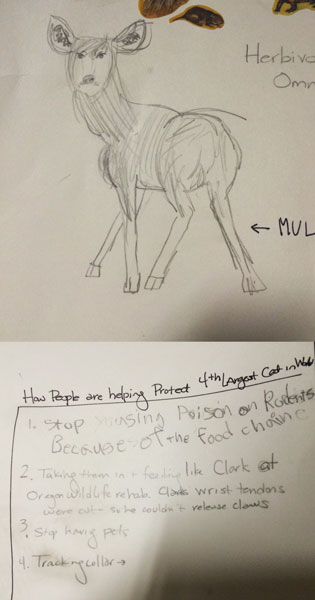 (More cones than rods, pupils dilate 3 times wider than humans, etc).
(More cones than rods, pupils dilate 3 times wider than humans, etc).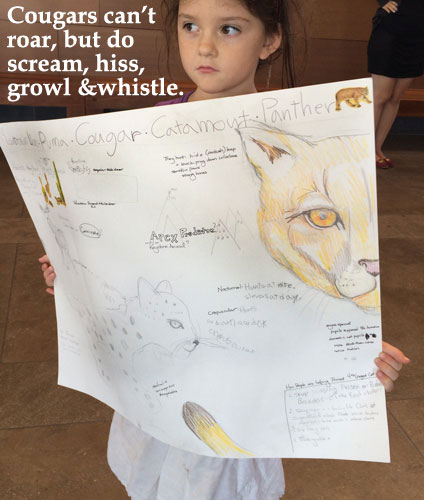
]]>
It’s that time of year to escape the heat of SoCal and head North to the Sequoia and King’s Canyon National Park. And what a wonderful forecast for our 5th year in a row – Highs in mid 70′s Lows in low 50′s. With over 600 square miles of protected nature, 6 visitor centers, 3 museums and dozens of ranger talks, this Campout is fabulous for homeschoolers. Even better is the bonding time that occurs amongst families tenting, feasting, playing, and learning alongside each other. Above 6,000 feet in elevation - No Poison Oak!
And with the Kaweah river in our campsites backdoor, we get to fall to sleep to the sound of cool water rushing by all night and day. Scrambling upon rocks, climbing trees, hiking to waterfalls, potlucks, a humdinger Talent Show, and campfires with storytelling and music and song will top it off.
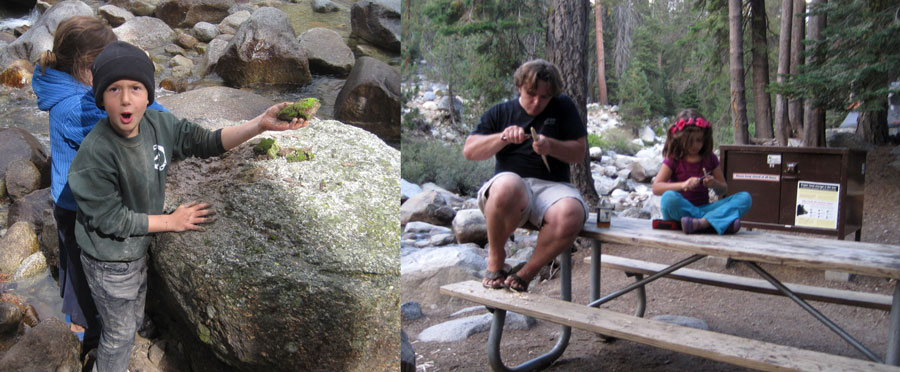 And how fortunate we are to have families proving workshops and supplies for basketweaving, bracelet making, dreamcatchers, and safety knife skills with whittling.
And how fortunate we are to have families proving workshops and supplies for basketweaving, bracelet making, dreamcatchers, and safety knife skills with whittling.


 This National park has so much to offer, most importantly the Giant Sentinels who inhabit this park – the Sequoias. This park is home to the LARGEST Tree in the World, named the General Sherman in 1879. The Park itself wasn’t established until September 25, 1890, with the help of John Muir, one of our country’s greatest naturalists and activist. Who will give us the honor of visiting us at our campsite Saturday morning and explaining his life from childhood in Scotland to creating the legacy of America’s National Parks.
This National park has so much to offer, most importantly the Giant Sentinels who inhabit this park – the Sequoias. This park is home to the LARGEST Tree in the World, named the General Sherman in 1879. The Park itself wasn’t established until September 25, 1890, with the help of John Muir, one of our country’s greatest naturalists and activist. Who will give us the honor of visiting us at our campsite Saturday morning and explaining his life from childhood in Scotland to creating the legacy of America’s National Parks.
And for those who want to see a Cave or two, Crystal Caves and Boyden caves are  wonderful choices.
wonderful choices.


The genesis of this week’s activity and learning comes directly from my youngest daughter. Let the sky, desert or ocean be the limit in making your personalized HABITAT. I will supply construction paper and other art supplies – you bring the creativity and fun! [...]]]>
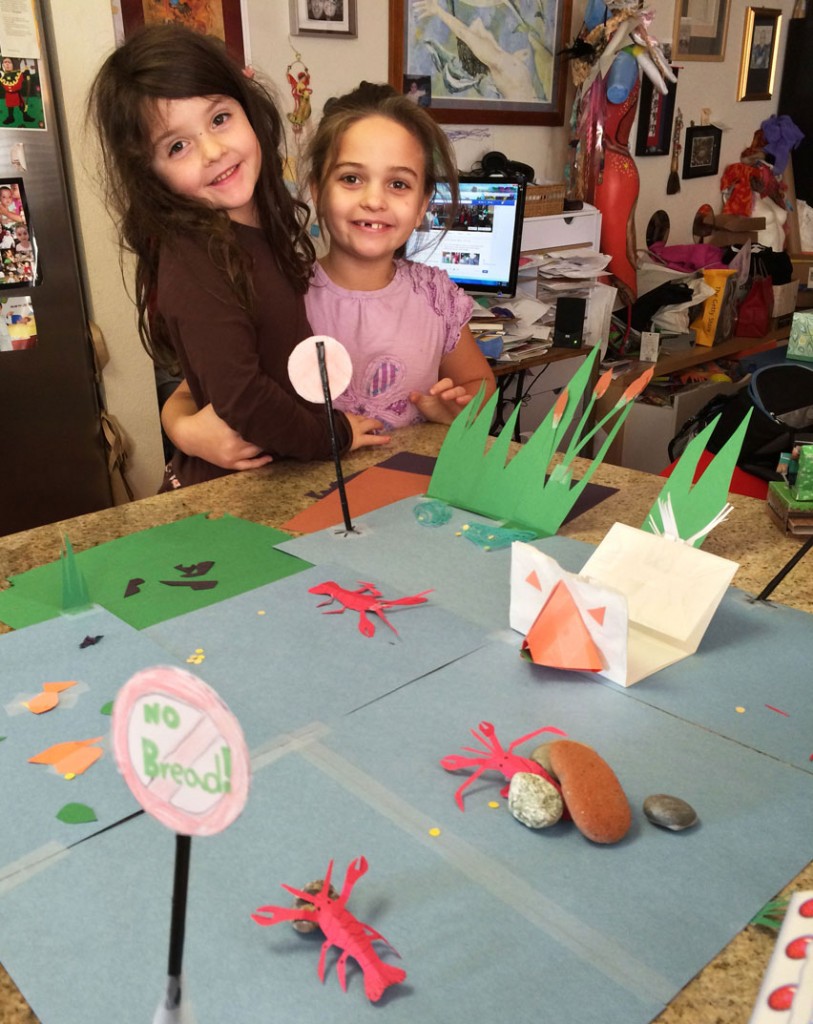
The genesis of this week’s activity and learning comes directly from my youngest daughter. Let the sky, desert or ocean be the limit in making your personalized HABITAT. I will supply construction paper and other art supplies – you bring the creativity and fun! Your goal can be to populate a Biome like a desert or marsh, or you can start with a Keystone animal like a wolf or an otter and then create the mini-web-of-life that sustains it. You can work by yourself, or enlist your friends to build your habitat together. (See how Yellowstone thrived when their Keystone animal – the Wolf – was returned to its natural habitat).
This is a great example of how learning and curriculum evolve organically in our home. One of the main reasons we create our own curriculum, is so that our children have greater control in what they are learning. My husband and I embrace the interests of our children as well as the experiences we have at parks, museums, and field-trips. We then to scaffold them into our overall educational goals. As a result, we experience less resistance because they are “choosing” what they are learning. Btw, “less” is a far cry from – not at all!
Creating an Animal Habitat or Turning Interest into Education
Step 1: Puffed with pride, my daughter brought me downstairs to show me the duck she made from a white bag and how two fans can make it swim across the counter.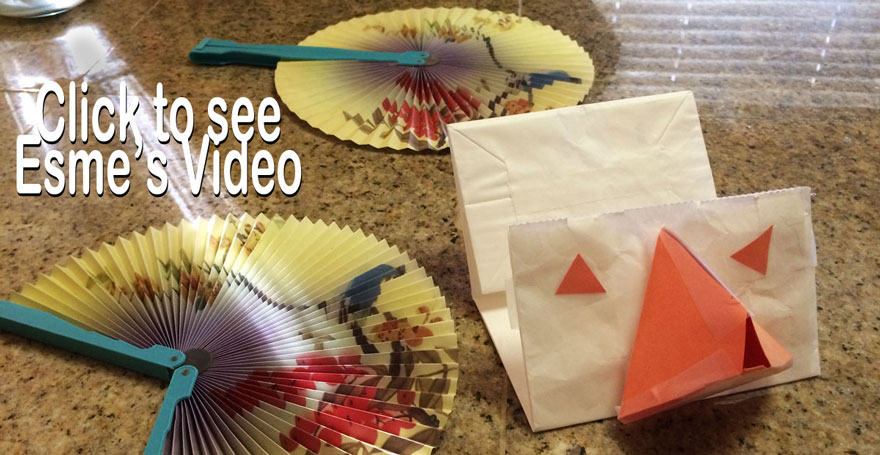 Click below to watch.
Click below to watch.
Step 2: She pulled out blue paper to make a pond. My eldest daughter came to see what we were doing.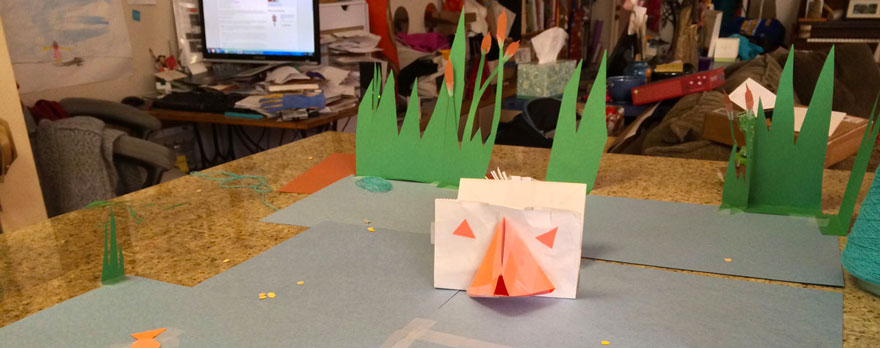
Step 3: I went to the computer and pulled up a link What Do Ducks Eat? We learned that they were omnivores and that they foraged differently during in each of the four seasons.
Step 4: Üla started making signs to keep people from feeding ducks empty calories while Esmé started making fish and fish eggs. I added grasses and cattails.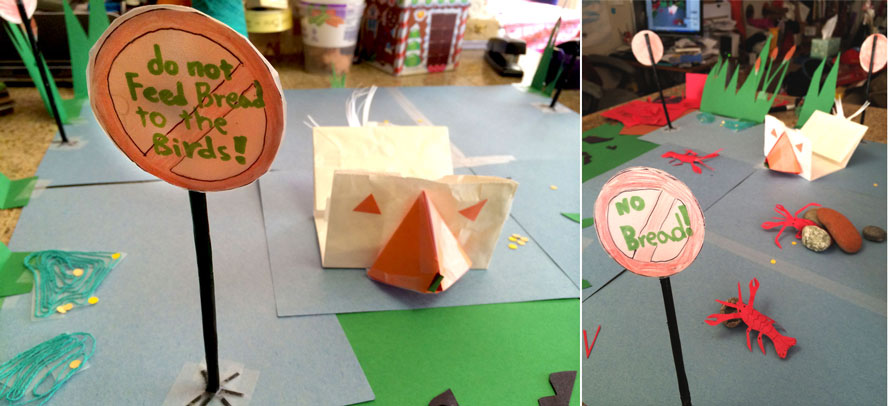
Step 5: The girls kept returning to the webpage to see what else was in the diet of ducks. Esmé added tadpoles and then insects. I added algae. And Üla made snails and started making crayfish. (To make an accurate crayfish, we pulled up the pictures from when Üla helped biologists capture the invasive species in Topanga’s watershed this past fall.)
Step 6: During this nature explosion on our kitchen countertop, we held numerous discussions about the 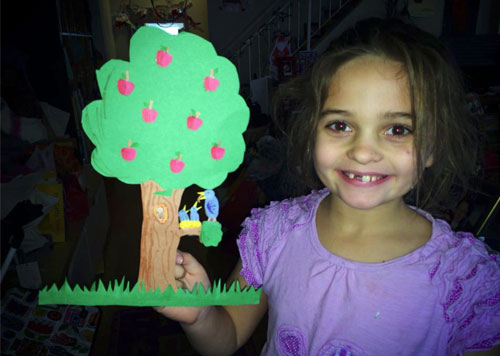 Web-of-Life. From there, I figured out ways to enfold other academic learning. For example I presented the question – “How long will it take these three invasive crayfish to over populate this pond?” This sent us to the computer to understand how often they reproduce. They suggested that if all three were boys – they would never over populate. But if they did, they pondered if it would turn out to happen in a Fibonacci number series. We also further discussed how the crawfish were displacing the native endangered trout in Topanga.
Web-of-Life. From there, I figured out ways to enfold other academic learning. For example I presented the question – “How long will it take these three invasive crayfish to over populate this pond?” This sent us to the computer to understand how often they reproduce. They suggested that if all three were boys – they would never over populate. But if they did, they pondered if it would turn out to happen in a Fibonacci number series. We also further discussed how the crawfish were displacing the native endangered trout in Topanga.
A day later, Üla had started on a Woodlands habitat that hosted a family of nesting bluebirds amongst other living creatures. Number 10 of the Darwin Challenge. And other friends have been inspired to start thinking about animals they love and their habitats. What animal will you create a world around? See you Thursday.
And don’t forget Potluck starts @ 11:30 and we have two special visitors…
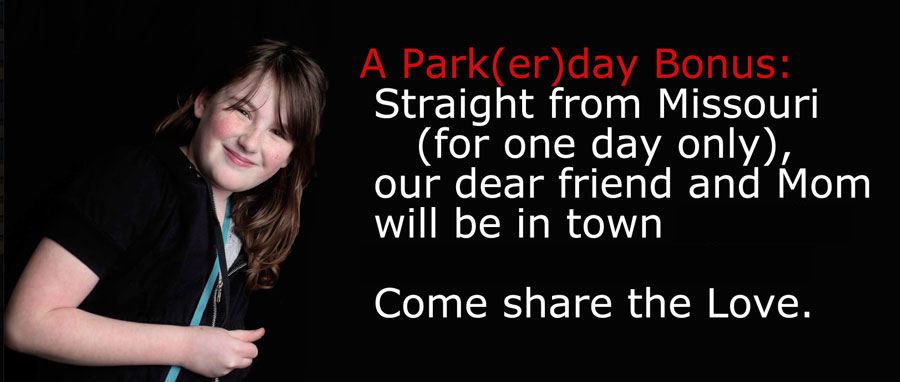
 How do you raise a Conservationist? You first spend time outdoors. You listen to what you can hear. You watch what life is around you: ants and pillbugs; birds trilling calls and cawing warnings; patterns in clouds in the morning, afternoon and evening; and more. Spending time in Nature creates awareness and compassion for the world about us. Fortunately for my family, there is alot of nature available in our area.
How do you raise a Conservationist? You first spend time outdoors. You listen to what you can hear. You watch what life is around you: ants and pillbugs; birds trilling calls and cawing warnings; patterns in clouds in the morning, afternoon and evening; and more. Spending time in Nature creates awareness and compassion for the world about us. Fortunately for my family, there is alot of nature available in our area.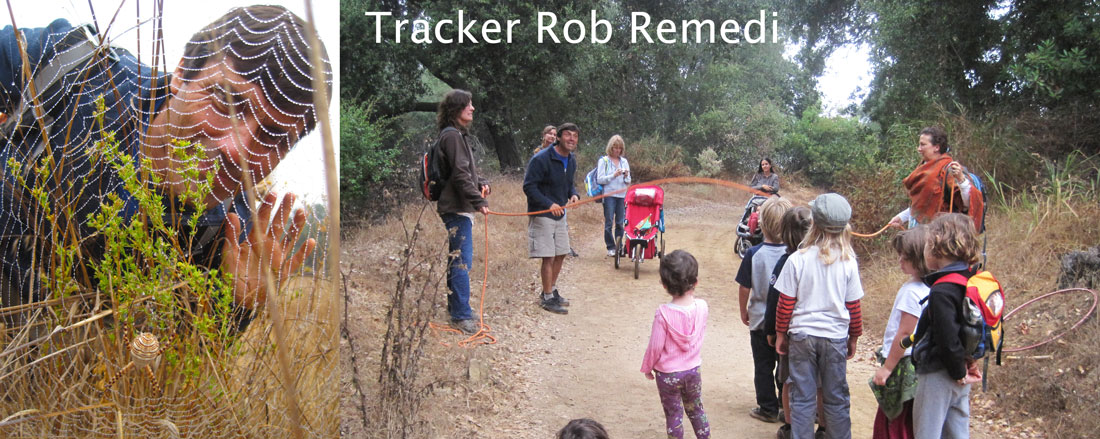
Even though we don’t live IN Topanga, many of our friends do and some of our happiest moments in California have taken place in and about Topanga canyon. This is why over the past 5 years, we have been involved in many events to help keep Topanga’s Web-of-Life intact. On Topanga Earthdays we’ve helped  clean out the watershed of debris and invasive plants; we have taken many conservation “walk-abouts” with Tracker Rob, and then with the Tree people we have taken out invasive plants and planted indigenous species. As members of the Topanga Wildlife Youth Group, my children were part of a sacred red-tailed hawk release as well as helped biologists record, research and remove
clean out the watershed of debris and invasive plants; we have taken many conservation “walk-abouts” with Tracker Rob, and then with the Tree people we have taken out invasive plants and planted indigenous species. As members of the Topanga Wildlife Youth Group, my children were part of a sacred red-tailed hawk release as well as helped biologists record, research and remove  invasive crayfish from the Topanga creek. Find out a way that you can get involved to help protect your environments and the your personal web-of-life. Your family will have a sense of pride and an added connection to the world outdoors. This is one of the best ways to prevent cynicism and complacency from taking hold of a human being. You need not look further than the faces in these photos to find proof.
invasive crayfish from the Topanga creek. Find out a way that you can get involved to help protect your environments and the your personal web-of-life. Your family will have a sense of pride and an added connection to the world outdoors. This is one of the best ways to prevent cynicism and complacency from taking hold of a human being. You need not look further than the faces in these photos to find proof.

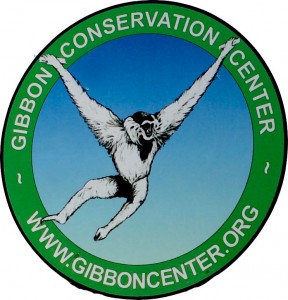 wonderful private tour of the largest conservation center for Gibbons in the western hemisphere. Gibbons are a delightful animal that my family knew very little about. But now, due in part to the dynamic tour guide Alma at the Gibbon Conservation Center (GCC), we feel like novice-experts. I believe, that is indeed the seed that every conservationists wishes to impart.
wonderful private tour of the largest conservation center for Gibbons in the western hemisphere. Gibbons are a delightful animal that my family knew very little about. But now, due in part to the dynamic tour guide Alma at the Gibbon Conservation Center (GCC), we feel like novice-experts. I believe, that is indeed the seed that every conservationists wishes to impart.  “The more you know,… the more you will care.” This couldn’t have been more evident, than in the middle of our tour, when our kids shared their desire to save the most endangered species of Gibbon in the wild, that are down to the last twenty in number. The children also discussed options on how to preserve habitats and still allow businesses to thrive that were presently devastating the homes of gibbons and other animals that live in jungles and forests. As a parent, I feel both pride and sadness over the responsibility that our children are taking to care for our planet. Points go to our tour guide for following the kid’s lead and dialoguing honestly and compassionately on this subject.
“The more you know,… the more you will care.” This couldn’t have been more evident, than in the middle of our tour, when our kids shared their desire to save the most endangered species of Gibbon in the wild, that are down to the last twenty in number. The children also discussed options on how to preserve habitats and still allow businesses to thrive that were presently devastating the homes of gibbons and other animals that live in jungles and forests. As a parent, I feel both pride and sadness over the responsibility that our children are taking to care for our planet. Points go to our tour guide for following the kid’s lead and dialoguing honestly and compassionately on this subject.
We can’t recommend this experience enough. Everyone in our group, age 1 year to 45 was engaged. Walking about the enclosures on such a lovely day, felt as if we were on National Geographic, observing beguiling primates swing and fly about in play as well as walk erect on the ground (looking more like humans than chimpanzees and great apes). And at the end of our tour, we experienced a crazy campus-wide concert of howling and crooning by most of the Gibbons, that I doubt any of us will ever forget. 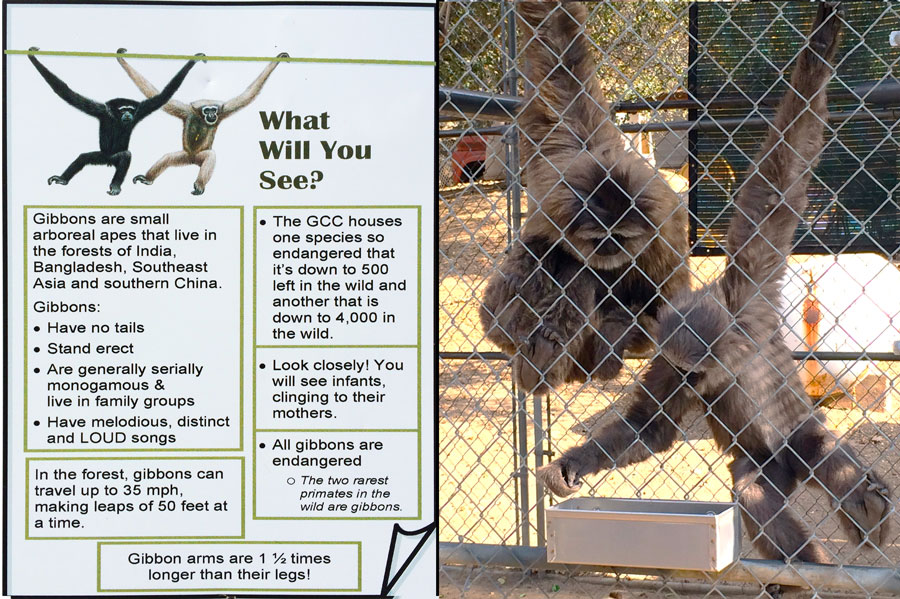 If you act quick enough, you can get tickets or private tours from Groupon at half price that will not expire until spring. Even though the center is open to the public on the weekends, it was well worth it to have the entire complex to yourself by purchasing the midweek private tour Groupon .
If you act quick enough, you can get tickets or private tours from Groupon at half price that will not expire until spring. Even though the center is open to the public on the weekends, it was well worth it to have the entire complex to yourself by purchasing the midweek private tour Groupon .
In addition to serving as a sanctuary since 1976 (when Gibbon specialist, Alan Mootnick founded it), the GCC presently works with governments and conservationists in Southeast Asia to aid in restoring the Gibbon populations. Extra care is taken to allow the Gibbon’s to exist as close to their natural state as possible in order to effectively reintroduce their offspring to their natural habitats. This means there is no man-handling beyond medical-required attention. The true habits and characteristics of the Gibbons are honored. For example, the enclosures do not have artificial grass, faux rocks or fake foliage (which appeals to humans). Instead they are structurally sound and interlaced with tree trunks, ropes and swings to best allow the Gibbons to fly, jump, spin and yank as hard as they would on trees and vines in the jungles and canopies of their indigenous habitats. And boy are their acrobatics a delight to behold.
 In the wild, Gibbons do not travel in large numbers. A pair of parents rearing their children is the traditional “band” of Gibbons. Their young are nursed from 2- 3 years and live with their parents in a family unit similarly to us. The youngest baby at GCC is seen in the lap of the orange Gibbon pictured above. He clung adorably to his mother as we watched her swing from her perch to pick up some greenbeans and place one each in her feet and free hand, before using the other hand to swing and maneuver herself back to her original perch to snack upon her green goodies. Around 18 years of age, the offspring are pushed out of the family unit to ideally start their own family and stake out their own territory.
In the wild, Gibbons do not travel in large numbers. A pair of parents rearing their children is the traditional “band” of Gibbons. Their young are nursed from 2- 3 years and live with their parents in a family unit similarly to us. The youngest baby at GCC is seen in the lap of the orange Gibbon pictured above. He clung adorably to his mother as we watched her swing from her perch to pick up some greenbeans and place one each in her feet and free hand, before using the other hand to swing and maneuver herself back to her original perch to snack upon her green goodies. Around 18 years of age, the offspring are pushed out of the family unit to ideally start their own family and stake out their own territory.  At GCC, each enclosure that houses a nuclear family is covered with tarps, not only to offer shade in the hot seasons, but to create visual camouflage allowing each Gibbon families a sense of separation like from foliage and canopies in the wild.
At GCC, each enclosure that houses a nuclear family is covered with tarps, not only to offer shade in the hot seasons, but to create visual camouflage allowing each Gibbon families a sense of separation like from foliage and canopies in the wild.
The life expectancy of a Gibbon is between 30 and 40 years, and yet the oldest Gibbon is now 40 and still alert and active. Once the youngest at the center, he is now the oldest. (Pictured sitting on the log while a younger descendent plays flies about). Unlike Zoos, that typically feed their animals twice a day, Gibbons at the center are fed TEN times a day, similar to their feeding and grazing styles in the wild. Their varied diet is continuously modified by the workers and volunteers, once receiving two bananas a day it has been cut down to one, where as yams have been increased and they are considering increasing their protein in the form of nuts. They spend over 2 thousand dollars a month on feeding these spectacular animals.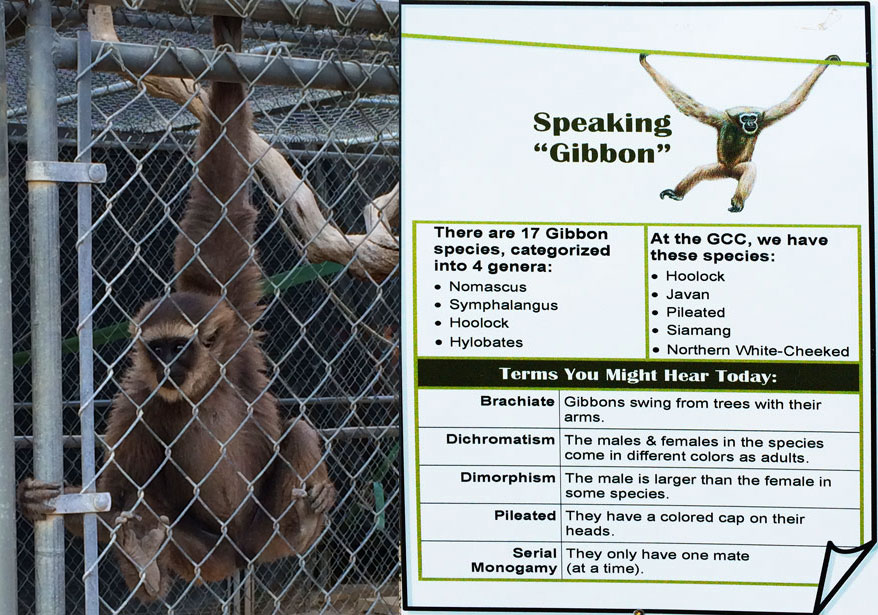
At the center, they have experimented with forms of entertainment and enrichment in the enclosures like swings, hammocks, and toys as well as some lovely drums on the grounds that our kids played upon.  Interestingly enough, as I looked around to see the reaction, the drumming didn’t do a thing for the Gibbons, but made us visitors dance a bit.
Interestingly enough, as I looked around to see the reaction, the drumming didn’t do a thing for the Gibbons, but made us visitors dance a bit.
Each volunteer and employee at the center are keen on observing habits, health and interests of these fascinating creatures in order to improve the life of Gibbons at GCC, as well as in sharing with the international consortium of sanctuaries, zoos and conservation areas to ensure that the 17 species of Gibbons have the best possible outcomes. Get your Groupon now, or just make a donation to the Gibbon Conservation Center that works so hard to protect these animals, build awareness around the globe and is ensuring these species will NOT go extinct. If you have never purchased a Groupon before, you can use this link and give me a referral bonus.
]]>


